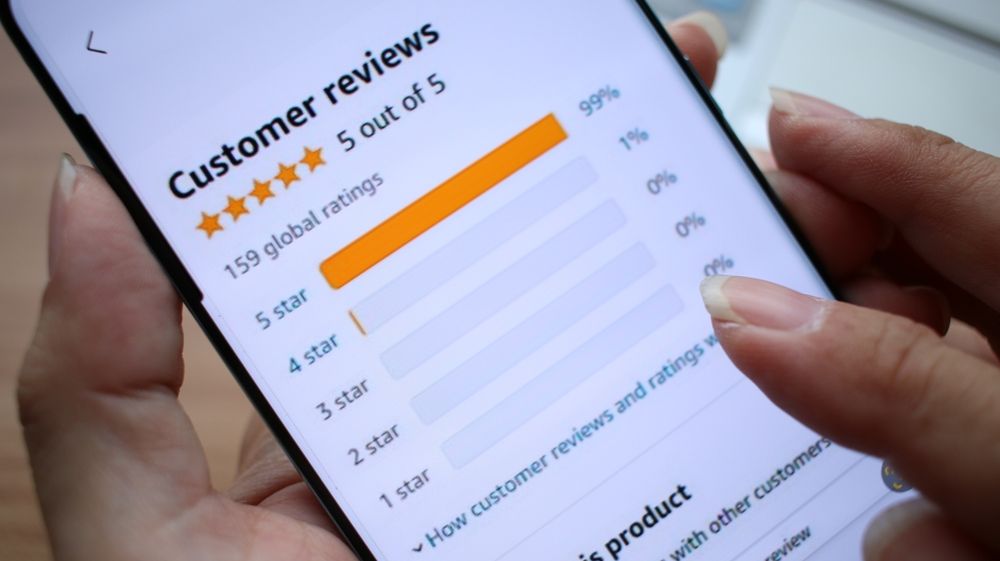
In today’s digital world, a company’s online reputation can make or break its success. How companies manage online reputation is crucial for brand image, customer trust, sales conversions, and long-term growth. It’s about building authentic, positive narratives and connecting with your target audience.
This post explores managing your online presence through effective reputation management strategies and helpful tools. By addressing customer experiences and concerns directly, you can shift perceptions while offering solutions and accurate information. We’ll examine how successful companies shape their image, respond to criticism, and protect their brand reputation.
Why Online Reputation Management Matters
Before exploring how companies manage their online reputation, let’s consider why. Customer reviews heavily influence purchasing decisions.
PowerReviews found that 97% of customers research product reviews before buying. Negative reviews can significantly impact these decisions, with 94% of customers dissuaded by bad reviews.
A positive online review can be extremely valuable. It not only builds trust with potential customers, but helps solidify existing customer relationships and drives business growth.
The Impact of Online Chatter
Digital conversations significantly influence potential customers. This online chatter quickly spreads opinions, making managing negative feedback crucial for brand reputation management. It’s also important to boost positive posts, especially on popular review sites.
Proactively handling negative feedback demonstrates commitment. Dixa reports 95% of customers share negative interactions (online and offline). However, only 47% share positive experiences.
If a customer shares praise, engage in direct interaction. Use comments and messages to foster positive discussions and create lasting relationships with customers.
How Companies Manage Online Reputation: A Multi-Faceted Approach
Today’s reputation management strategy involves a deep understanding of various channels, including review sites, social media, and search engine results. Here’s how companies manage their online reputation through a multi-faceted approach that considers public relations, marketing campaigns and more:
1. Monitoring Your Online Presence
Regularly monitor your online reputation across various platforms and incorporate SEO practices. This allows you to take advantage of search engine optimization.
Daily online searches, Google Alerts, and Mention provide insights into online discussions about your company. These online reviews can tell you what your customer experience looks like from your customers’ perspectives.
Free tools like Google Alerts offer helpful insights into online comments and discussions. Paid tools like Mentionlytics provide real-time alerts when your company is mentioned. Having this customer feedback allows you to continuously improve.
2. Responding to Feedback
Customers, especially those with concerns, expect responses. Open communication from real people within the business is vital for online reputation management. Using tools like Podium for this can be highly beneficial.
Quick, compassionate responses can turn negative incidents into positive customer service experiences. Most replies require honesty and a commitment to resolution.
The 2023 Sprout Social Index™ Report found 69% of customers expect replies by the end of the business day. Your marketing strategy and management strategy should involve promptly answering your customer reviews.
3. Encouraging Reviews
If customers aren’t leaving reviews, encourage them to share their positive experiences and provide customer feedback. Simplify the process through email follow-ups.
Customers often consult reviews before trusting a business. Gathering and showcasing reviews is essential for building trust and credibility.
This encourages happy customers to leave more online reviews, painting a better picture of your brand online for prospective customers.
4. Content Creation
Creating high-quality, positive content is often overlooked in online reputation management. It plays a vital role in building trust and respect online. The ability for potential customers to see consistent, high-quality content related to your brand can do wonders for your brand image.
Marketing teams use press releases, viral campaigns, and strategic online reputation management to build strong reputations. Sharing positive user-generated content and positive customer feedback will only add fuel to the fire. Sharing blog posts, articles and other media posts across your social media accounts can dramatically help your brand online.
Create engaging, original content that you want to see at the top of search engine results. Be sure to tailor your positive content to appeal to your specific target audience. You will want to incorporate SEO strategy best practices as well when sharing content on your business website and throughout other media accounts.
5. Transparency and Trust
The internet archives everything. Managing missteps requires effort and a proactive approach to maintain a positive online presence and build trust. Transparency builds trust and strengthens your online reputation.
Admitting mistakes and demonstrating a commitment to fixing issues builds credibility. Empathy and genuine concern can help restore trust and improve your brand image.
Tools for Reputation Management
Numerous reputation management tools are available to help businesses manage their online presence. Here’s a table with some recommendations:
| Tool | Description | Free Trial/Plan? |
|---|---|---|
| Yext | Reviews management, syncing reviews and information, creating new positive content and building your business online reputation | Demo available, contact sales |
| ReviewTrackers | Tracking, responding to reviews, detailed analytics, reporting options and making reviews accessible, even for large teams | Demo, contact sales |
| Reputation | Detailed reputation score information, customer experience insights from multiple channels | Demo, contact sales |
| BirdEye | Reputation marketing that includes SEO marketing tools and an integrated messaging app | 14 days |
| Cision | Helps to measure campaign impact from your paid media and brand-owned social content with access to detailed reports for large and global brands | Demo available |
| Podium | Webchat, text-messaging and social management | Demo available |
Real-World Examples: How Companies Manage Online Reputation
Examining how brands handle public blunders provides valuable insights into online reputation management. Learning from both positive and negative reviews helps businesses ensure consumers have the best experience possible. Below are a few ways companies use customer feedback to improve their brand reputation:
United Airlines
A video of a customer being removed from a United Airlines flight quickly went viral. This incident resulted in over $1 billion in losses for the company and sparked international outrage. Influencer marketing, a part of public relations, may be a way to remedy these kinds of situations and improve customer experience in the future.
The event highlighted the importance of responding to negative feedback swiftly. Addressing negative comments effectively helps businesses maintain transparency and rebuilds trust. You can do this through responding directly to negative comments on your blog posts and on social media. Many social media platforms make responding to both positive reviews and negative comments simple and easy. Negative feedback provides valuable insight that you can leverage to ensure consumers that you are actively listening to their opinions and improving as a company. Remember, building customer trust is vital for successful crisis management.
Dove’s Campaign Shifted Perceptions
Dove’s “Real Beauty” campaign aimed to challenge narrow beauty standards. This marketing campaign successfully shifted perceptions and redefined industry norms. Review management played a crucial role, showcasing how Dove effectively responded to customer feedback and online reviews. Dove was trying to build up a better reputation after a bad reputation incident had occurred. Businesses use tools like Cision to measure their campaign’s effect on a given target audience, such as Dove’s with this “Real Beauty” campaign.
The campaign’s message of self-acceptance resonated with audiences, boosting trust and encouraging positive discussions. It expanded notions of beauty and promoted inclusivity. Encouraging positive reviews through customer reviews goes a long way in cultivating positive brand recognition.
Managing online reputation involves continuous monitoring, engagement, transparency, and accountability. Companies manage online reputation by actively listening to customer feedback and proactively addressing customer experience concerns.
Successful reputation management builds trust and fosters positive relationships with customers. By implementing these strategies, businesses can elevate their online image, convert prospects, and achieve long-term success. This includes encouraging existing customers to leave reviews on review sites, business websites and other places to leave reviews. If customers had good customer experiences, and businesses want to increase customer engagement and cultivate positive relationships with customers, there is no better way to cultivate positive reviews than to straight up encourage customers to leave positive reviews for others to read. Doing so builds trust in your business and shows that transparency builds trust. Transparency also builds better relationships with existing customers and improves customer experience in the future. Your SEO strategy should involve leaving customer feedback requests after someone makes a purchase to collect the highest amount of reviews possible.












